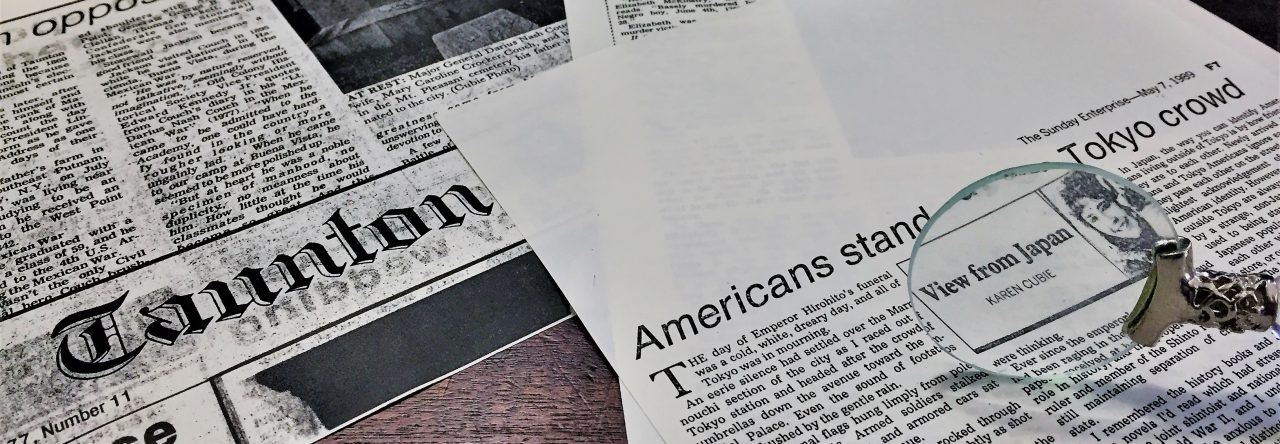After I got married on Jan. 1, 1994, I visited the DMV to update my license.
The Dame and the DMV
“How do you want your name to appear?” an older woman behind the counter asked me, fingers poised over the keyboard to enter the information.
“You can type Karen Christina Cubie Henck,” I answered. “No hyphen please.”
Her fingers did not move. She turned her head and looked straight into my face.
“Ummm, are you sure?” she asked.
“Why?” I responded. “Doesn’t it fit?”
“Well, it fits,” she replied. “It just doesn’t look right. And besides, you’ll have to write this long name every time you sign documents.”
“I’m not the president,” I said, confusedly. “I don’t expect to sign hundreds of documents a day.”
“But it just looks so squished,” she declared.
“Can I change it later if I think it’s a problem?” I asked.
“Of course,” she said. And, seemingly satisfied that I understood what I was getting into, she completed the form. My new, wifely identity was under way.
I was glad for the trace of my maiden name in my new identity a few years later, when I sold the car I had brought into our marriage. The legal documents were in my maiden name, and I was able to demonstrate continuity of identity and sell the car without a problem.
But getting a driver’s license in my new home state of Connecticut has not been so simple.
Armed with my birth certificate (with my maiden name), the driver’s license from my previous state (bearing my full name), and mail I had received at my new address, I approached the DMV counter and told the woman at the keyboard why I was there.
She took the documents from me and shuffled through them, pausing to compare my birth certificate to my driver’s license.
“Okay,” she said, “but where’s your marriage license?”
I looked blankly at her.
“You need your marriage license,” she declared. “Because the name on your license is not the same as on your birth certificate. You have to prove continuity of identity.”
She pulled a form from her file and clipped it to my pile of papers.
“But doesn’t the inclusion of my maiden name on my driver’s license cover that?” I asked.
She pushed the papers to me and shook her head.
“Make sure you fill everything out before you come back,” she said, looking behind me and waving the next person in line forward.
As I carried the documents to my car, I reflected upon what this demand for continuity of identity highlighted about women’s lives. I pondered the social pressure the women of my generation faced to “give up” their names when they married, how some people became angry even at the idea that I would maintain my maiden name while taking on my husband’s surname. “A man’s name is all he has when he comes into this world and it’s all he’s got when he dies,” one relative exclaimed, suggesting that a wife who maintains her own identity is stealing something from her husband. Good girls, I gathered, should not be so selfish as to insist on their own names, nor should they desire to carry this single inheritance from birth unto death.
My registry experience demonstrates the persistence of traditional gender relations, a tradition shaped by the old system of coverture in which Eliza Jones became Mrs. John Smith, losing even her birth name as her newly married status submerged her entirely into the identity of her husband. “The two shall become one,” I remember people reciting at weddings, a saying intended to affirm this understanding that the wife is too delicate, too dependent to require her own identity.
“It’s just easier,” one well-intentioned friend insisted to me, with a comment that directly contradicted my registry experience, making me question just how dependent she was on her own significant other. Would she still maintain that position today, I wondered, when she has to arm herself with additional documents linking her adult identity to her birth certificate?
A few of my bolder friends refused to alter their identities at all upon marriage. I, however, hoped to have the best of both worlds, retaining “good girl” status while also bearing a name that links me and my pre-marriage career equally to my birth family and our future children.
But such a compromise was not enough. It has not prepared me to navigate the sea of bureaucracy more easily than women who simply dove head first into their husband’s names. I’m beginning to think my boldest sisters were also the wisest. For the rest of us, a trip to the DMV ends with question of logistics. What is a better expenditure of my time? Spending hours digging through a storage unit hunting for documents or waiting to change my legal address until a new marriage certificate can fly to me from a distant state?

Another example of institutional sexism combined with bureaucracy! I hope all your daughters will read this before they get married!
LikeLiked by 1 person
They already have!
LikeLike